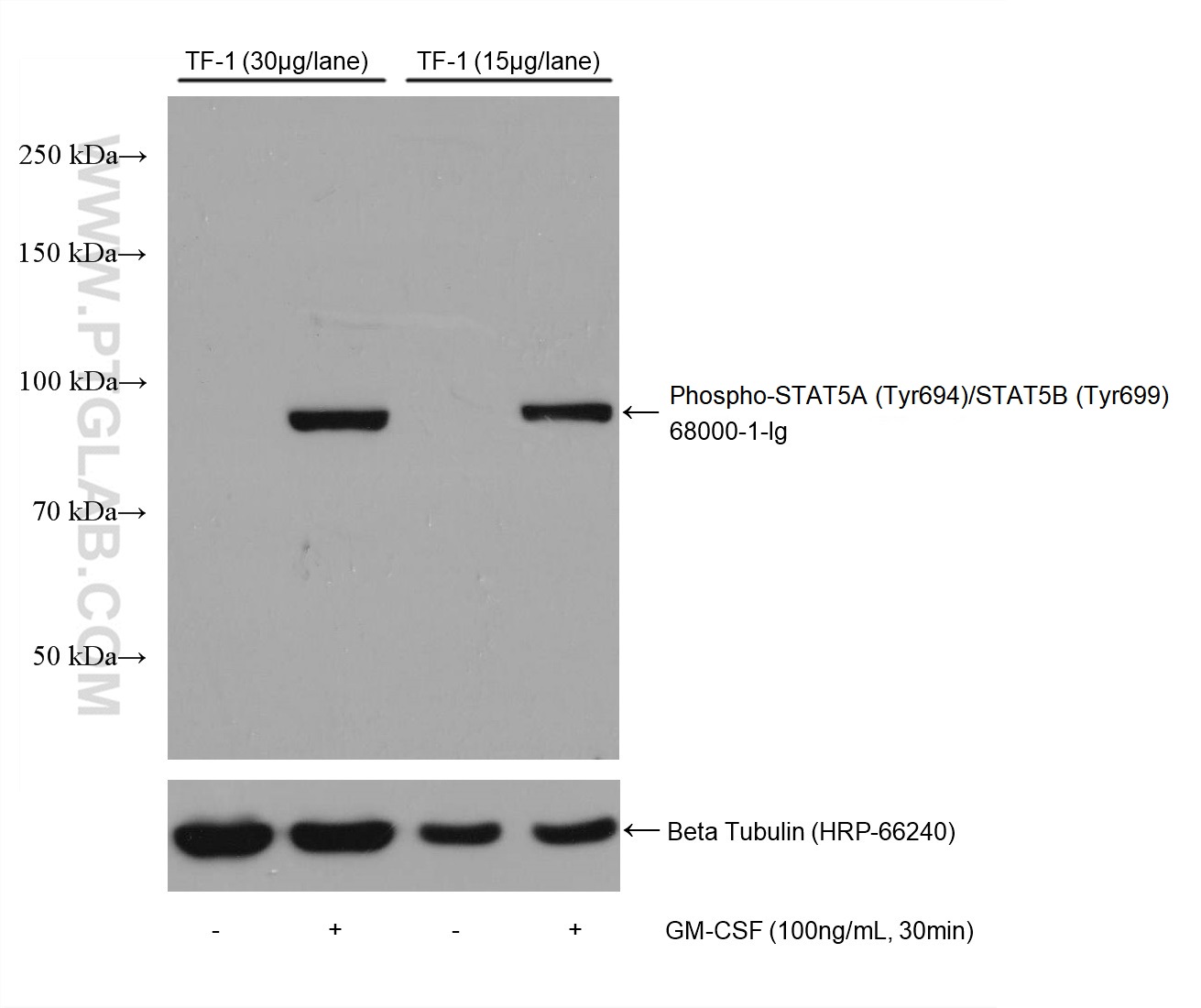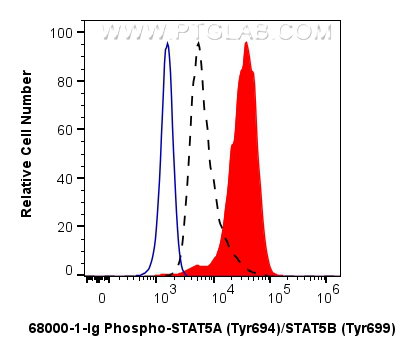验证数据展示
产品信息
68000-1-PBS targets Phospho-STAT5A (Tyr694)/STAT5B (Tyr699) in WB, FC (Intra), Indirect ELISA applications and shows reactivity with human samples.
| 经测试应用 | WB, FC (Intra), Indirect ELISA Application Description |
| 经测试反应性 | human |
| 免疫原 | Peptide 种属同源性预测 |
| 宿主/亚型 | Mouse / IgG2a |
| 抗体类别 | Monoclonal |
| 产品类型 | Antibody |
| 全称 | signal transducer and activator of transcription 5A |
| 别名 | STAT5A, STAT5, MGF, 1F7G5 |
| 计算分子量 | 794 aa, 92 kDa |
| 观测分子量 | 90 kDa |
| GenBank蛋白编号 | BC027036 |
| 基因名称 | STAT5A |
| Gene ID (NCBI) | 6776 |
| RRID | AB_2918748 |
| 偶联类型 | Unconjugated |
| 形式 | Liquid |
| 纯化方式 | Protein A purification |
| UNIPROT ID | P42229 |
| 储存缓冲液 | PBS only , pH 7.3 |
| 储存条件 | Store at -80°C. The product is shipped with ice packs. Upon receipt, store it immediately at -80°C |
背景介绍
STAT5A, also named as STAT5, belongs to the transcription factor STAT family. In response to cytokines and growth factors, STAT family members are phosphorylated by the receptor associated kinases, and then form homo- or heterodimers that translocate to the cell nucleus where they act as transcription activators. STAT5A is activated by, and mediates the responses of many cell ligands, such as IL2, IL3, IL7 GM-CSF, erythropoietin, thrombopoietin, and different growth hormones. Activation of STAT5A in myeloma and lymphoma associated with a TEL/JAK2 gene fusion is independent of cell stimulus and has been shown to be essential for the tumorigenesis. The mouse counterpart of human STAT5A is found to induce the expression of BCL2L1/BCL-X(L), which suggests the antiapoptotic function of STAT5A in cells. This antibody is a rabbit polyclonal antibody raised against residues near the C terminus of human STAT5A.

